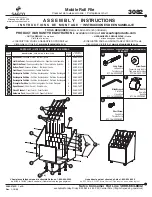
H A R D W A R E O P E R A T I O N
Data Device Corporation
29
BU-65572T Manual
The
BU-65572T
supports three types of response errors: no response, a
late response, or a response on the wrong bus. No response errors may
be programmed for a single bus (Bus A or Bus B) or for both buses.
Injecting a no response error on one bus provides a simple mechanism
for testing bus controller retry conditions. A late response may be
programmed in the range of 12 to 30 secs in 1 sec increments.
7.3.2 RT Intermessage Routines
The RT section of the
BU-65572T
also supports intermessage routines.
Upon completion of a RT message the
BU-65572T
's on-board processor
executes two intermessage routines. The data table that was used by the
RT for a given message specifies which intermessage routines will be
executed. Refer to the Tester Simulator Menu Manual, Appendix B for a
summary of the
BU-65572T
's intermessage routines.
As with the Bus Controller operation, the RT intermessage routines
specify special actions to take place at the end of the current message
processing. One of the more common actions that are taken is to signal
the application that the hardware completed the message by generating
an interrupt to the system. Other actions will cause discretes to be set or
cleared and data tables to be swapped. Since each RT / Sub-address
can be assigned a block of data tables, each message to the RT can
result in different actions being taken.
7.4 BC/RT Data Tables
For each of the installed 1553 channels, the
BU-65572T
maintains 1024
data tables within the shared RAM. Each data table may be up to 32
words in length. The total memory allocation for all data tables is
restricted to 12K words. These data tables are common to both BC and
RT. Internal lookup tables map each RT address, T/R, sub-address
combination (RT mode) and message number (BC mode) to a chosen
data table. Data tables may be read or written to in real time by the user
(„ddcReadData‟ or „ddcWriteData‟) and may be either single or double
buffered. Double buffering can be used to avoid the memory access
contention that occurs when the PC's application and the 1553 bus
access data tables simultaneously. The
BU-65572T
provides an optional
block data mode in which the data table number associated with a given
RT message is incremented after completion of the message. The block
data mode is implemented as a circular data structure. Each RT
command (RT address, T/R, and sub-address) has three data table
numbers associated with it: first, last, and current. The current data table
number will be incremented after completion of message until the value
Artisan Technology Group - Quality Instrumentation ... Guaranteed | (888) 88-SOURCE | www.artisantg.com











































